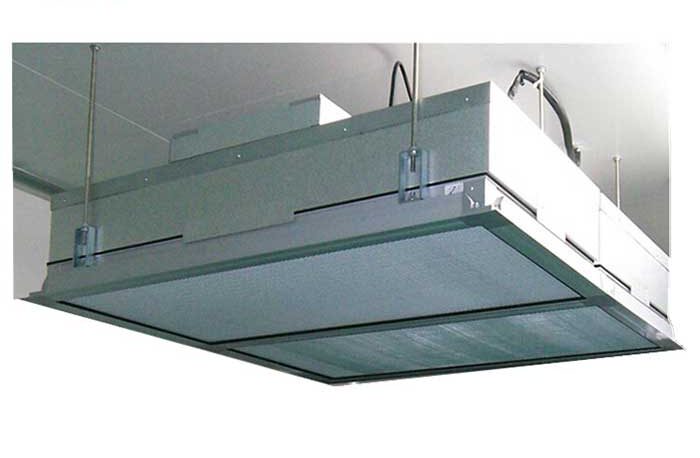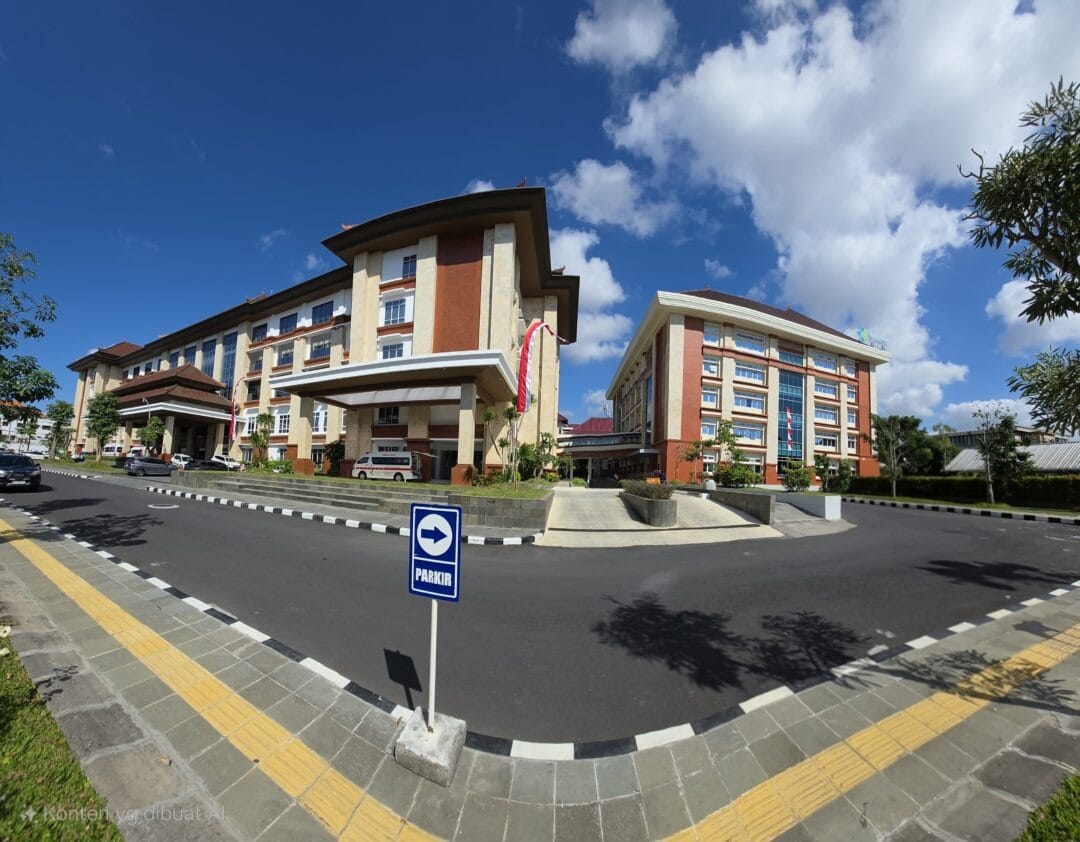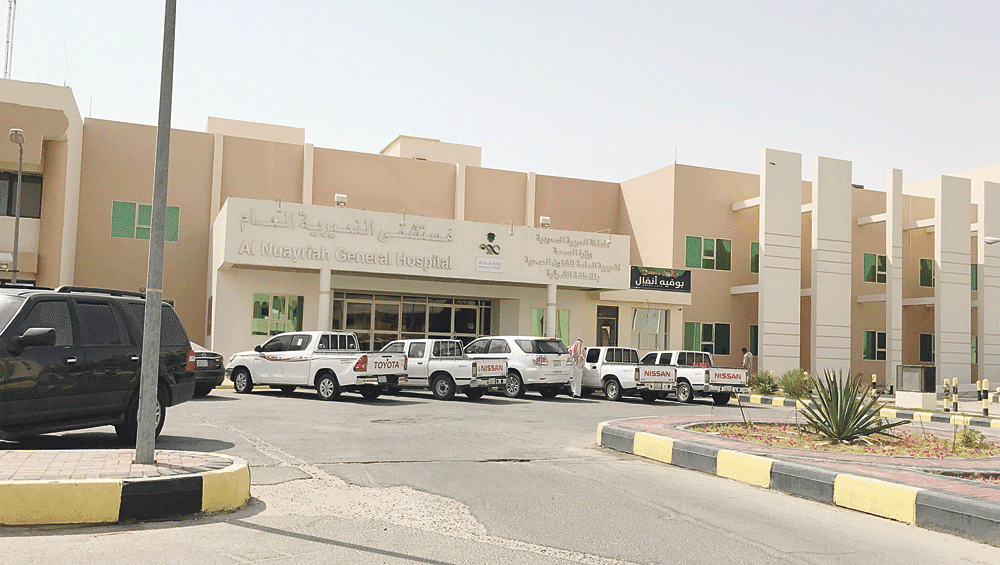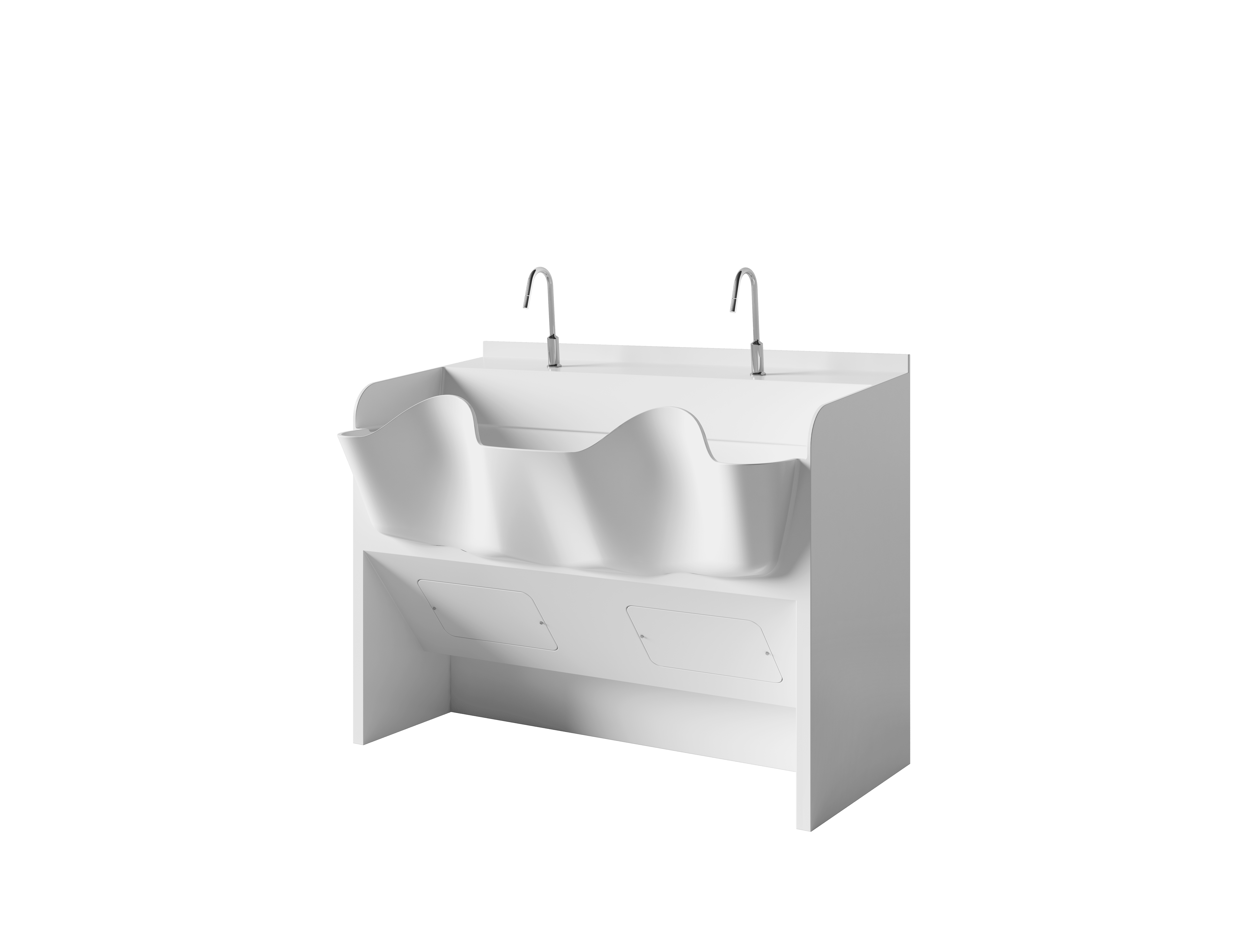
Introduction to Modular Operating Theaters
Modular operating theaters represent a significant advancement in the healthcare sector, offering a new model for surgical environments that contrasts sharply with traditional operating rooms. These modern facilities are designed using prefabricated components, allowing for efficient assembly and disassembly, which can be crucial in addressing the dynamic needs of hospitals and surgical centers. Unlike conventional operating rooms, which are often constructed with fixed layouts, modular theaters can be easily reconfigured to accommodate varying surgical requirements and technological advancements.
The design of modular operating theaters emphasizes flexibility and adaptability. Each unit is equipped with state-of-the-art medical technology and can incorporate various surgical equipment specific to the needs of different procedures. This adaptability extends to the layout, which can be tailored to optimize workflow and ensure that healthcare professionals have immediate access to necessary tools and resources. Furthermore, the high standards of hygiene and infection control in these facilities are intrinsic to their design, promoting patient safety and operational efficiency.
The rise of modular construction in healthcare settings is a response to the increasing demand for high-quality medical services. These structures can be rapidly deployed, often reducing the time required for construction and enabling hospitals to respond swiftly to changes in patient volume and surgical needs. Additionally, modular operating theaters can be integrated into existing healthcare facilities, enhancing capacity without the extensive renovations often required for traditional operating rooms.
Overall, the trend towards modular operating theaters signifies a crucial shift in how healthcare facilities approach surgical environments, combining efficiency, flexibility, and advanced technology to better serve patients and medical professionals alike.
Benefits of Modular Operating Theaters
Modular operating theaters present a revolutionary approach to healthcare infrastructure by offering numerous advantages that cater to the evolving demands of modern healthcare systems. One of the primary benefits of modular operating theaters is their enhanced flexibility in design. These theaters can be tailored to fit various clinical environments, making them suitable for hospitals of all sizes and functions. The modular components allow for easy customization to meet specific workflow needs, enabling surgical teams to create an optimized space that supports efficient procedures and fosters improved patient care.
Another significant advantage is the speed with which modular operating theaters can be assembled and disassembled. The components are prefabricated offsite, which reduces construction time and allows hospitals to expand or adapt their facilities according to changing requirements without prolonged disruptions. This rapid deployment is essential for healthcare systems that need to respond promptly to increased patient demands or emergency situations, showcasing the inherent adaptability of modular solutions.
Cost-effectiveness is also a notable benefit of modular operating theaters. By employing standard modular components, hospitals can achieve significant savings on construction costs and time. Additionally, operational efficiencies gained through improved design and quicker setup translate to lower overheads and reduced downtime, which ultimately benefits both healthcare providers and patients financially.
Importantly, these benefits contribute to improved patient outcomes. The flexible design allows for better workflow and ergonomics, enhancing both staff efficiency and patient comfort. Furthermore, the ability to quickly adapt modular operating theaters in response to evolving clinical guidelines or technological advancements ensures that healthcare facilities remain at the forefront of quality care delivery. Overall, the integration of modular operating theaters symbolizes a progressive step forward in optimizing healthcare settings, paving the way for enhanced efficiency, adaptability, and patient welfare.
Key Features of Modular Operating Theaters
Modular operating theaters represent a significant advancement in healthcare infrastructure, offering numerous features that enhance both operational efficiency and surgical performance. One of the primary attributes of these innovative facilities is their customizable layouts. Unlike traditional operating rooms, modular theaters allow for flexible configurations, enabling healthcare providers to adapt the space according to specific procedural requirements. This adaptability ensures that surgical teams can optimize workflow, reduce turnaround times, and improve patient outcomes.
Another noteworthy feature is the integration of advanced medical technology. Modular operating theaters are designed to accommodate state-of-the-art equipment and digital solutions. This integration not only facilitates improved surgical precision but also enhances communication among surgical teams. For instance, real-time imaging systems and robotic surgical tools can be seamlessly incorporated, allowing for sophisticated procedures to be performed with greater accuracy and efficiency. The ability to integrate such technologies ensures that healthcare systems are equipped to provide cutting-edge treatment options.
Infection control measures are critical in any surgical environment, and modular operating theaters are specifically engineered to mitigate the risk of healthcare-associated infections. These facilities typically incorporate specialized materials that are easy to clean and maintain. Moreover, advanced ventilation systems are employed to ensure optimal air quality, reducing the likelihood of airborne contaminants. Such rigorous infection control protocols are vital in sustaining patient safety and enhancing public trust in surgical services.
Lastly, energy-efficient designs are a hallmark of modular operating theaters. These facilities are often built using sustainable materials and incorporate energy-saving technologies, contributing to greener healthcare practices. By minimizing energy consumption and reducing waste, modular operating theaters not only promote environmental stewardship but also align with the broader goals of cost-effective healthcare delivery.
Case Studies of Successful Implementations
Modular operating theaters have emerged as a transformative solution within the healthcare sector, significantly enhancing operational efficiency and patient care standards. Several hospitals and healthcare facilities around the globe have successfully implemented these innovative constructions, each showcasing unique challenges, solutions, and outcomes.
One notable example is the implementation of a modular surgical unit at a leading hospital in Sweden. Faced with chronic overcrowding and prolonged wait times for surgeries, the hospital sought a rapid and efficient solution. By utilizing prefabricated modules, the hospital established an additional operating theater in just a few months, compared to traditional methods that typically take years. This modular unit not only increased surgical capacity but also reduced the backlog of procedures, allowing the facility to serve a larger patient population more effectively.
Another compelling case comes from a healthcare facility in the United Kingdom that integrated modular operating theaters to address the need for specialized surgical procedures. The facility faced substantial logistical challenges due to its aging infrastructure. By adopting modular construction, they were able to create state-of-the-art surgical environments tailored for specific types of surgery. This adjustment led to improved surgical outcomes and higher patient satisfaction scores, proving the efficacy of modular designs in optimizing healthcare delivery.
In the United States, a prominent hospital group established a series of modular operating rooms to enhance its trauma response capabilities. The facility initially struggled with rapid patient influx during emergencies, often leading to delays in critical care. The introduction of modular designs allowed for the rapid deployment of additional surgical suites, thus scaling their response to traumatic cases. As a result, the hospital reported a significant decrease in surgery wait times, improved patient throughput, and overall enhanced emergency care capabilities.
These case studies exemplify the potential of modular operating theaters to address diverse challenges faced by healthcare facilities. Through adaptive design and efficient construction, hospitals can successfully overcome limitations, resulting in enhanced patient outcomes and improved operational dynamics.
Comparative Analysis: Modular vs. Traditional Operating Theaters
The evolution of healthcare infrastructure has led to the emergence of modular operating theaters, which offer distinctive advantages compared to traditional operating theaters. One of the most significant differences lies in construction time. Modular operating theaters can often be assembled in a matter of weeks, as they are pre-fabricated in a factory setting and then transported to the site. Conversely, traditional operating theaters often require extensive on-site construction, which can lead to prolonged delays and increased costs. This expedited construction time is crucial for healthcare facilities experiencing a surge in patient demand.
Cost is another critical factor in the comparison between modular and traditional operating theaters. Modular theaters tend to be more cost-effective overall due to their streamlined construction processes and reduced labor costs. The factory setting minimizes waste and maximizes efficiency, frequently resulting in lower material expenses. Traditional operating theaters, on the other hand, often involve higher initial costs related to extensive site preparation and installation, as well as the potential for unforeseen expenses during construction due to delays and complications.
Scalability is a notable advantage of modular operating theaters. Their design allows for easy expansion or modification when necessary, making them suitable for healthcare facilities anticipating growth. This adaptability contrasts sharply with traditional theaters, which may necessitate significant renovations for expansion resulting in operational disruptions. Additionally, modular designs can be tailored to specific hospital needs, accommodating new technologies and staff requirements with relative ease.
In conclusion, the comparative analysis of modular versus traditional operating theaters highlights the benefits of modularity in terms of construction time, cost efficiency, scalability, and adaptability. As healthcare demands evolve, the modular approach provides a flexible solution for modern medical facilities. This innovative model offers a pathway towards more resilient and efficient healthcare infrastructure, addressing the challenges that traditional operating theaters may pose.
Future Trends in Modular Operating Theater Design
The landscape of healthcare is continuously evolving, prompting significant advancements in the design and functionality of modular operating theaters. One of the prominent trends shaping this development is the integration of smart technology. By utilizing cutting-edge technologies such as artificial intelligence, IoT devices, and robotics, modular operating theaters are becoming more efficient and capable of supporting complex surgical interventions. These technologies not only enhance communication and data sharing among surgical teams but also improve patient outcomes through real-time monitoring and analytics.
Another crucial trend in modular operating theater design is the growing emphasis on sustainability. As healthcare facilities strive to reduce their carbon footprint, modular designs enable more efficient use of resources while maintaining high standards of care. Modular operating theaters are increasingly constructed using eco-friendly materials and energy-efficient systems. This approach minimizes waste during the building process and promotes sustainability throughout the theater’s lifecycle. Incorporating renewable energy sources and optimizing workflows furthers these sustainability efforts and aligns with global initiatives to promote environmentally responsible healthcare practices.
Moreover, design innovations are being tailored to meet the evolving needs of surgical practices. The flexibility of modular operating theaters allows for adaptable layouts and configurations, enabling hospitals to respond quickly to changes in surgical volume and complexity. This adaptability ensures that healthcare providers can maintain high levels of care while accommodating various surgical specialties. Additionally, ergonomic considerations in the design of these theaters support the well-being of surgical staff, minimizing fatigue and enhancing productivity in the operating room.
In summary, the future of modular operating theater design is characterized by the integration of smart technology, a focus on sustainability, and flexibility to meet the demands of contemporary surgery. As these trends continue to evolve, they hold the potential to revolutionize surgical environments, delivering improved patient care while fostering innovation in healthcare delivery.
Challenges and Considerations
The implementation of modular operating theaters, while promising in enhancing healthcare delivery, does not come without its set of challenges and considerations. A significant aspect that stakeholders must navigate is regulatory compliance. The healthcare sector is governed by strict regulations to ensure patient safety and quality care. Modular operating theaters may require adherence to various building codes and health regulations that differ by region. Ensuring compliance can necessitate extensive research and a thorough understanding of local regulations, which may extend the timeline for deployment.
Initial investment costs represent another crucial consideration in the transition to modular operating theaters. While these facilities can lead to long-term savings and operational efficiencies, the upfront costs associated with purchasing and installing modular units can be substantial. This includes not only the cost of the modular units themselves but also the expenses related to site preparation, transport logistics, and installation. Financial planning and securing adequate funding will be essential for healthcare institutions contemplating this transformation.
Logistical issues further complicate the rollout of modular operating theaters. The modular approach allows for increased flexibility in design and functionality; however, integrating these theaters into existing hospital systems can pose logistical hurdles. These may include challenges related to the location of existing utilities, establishing efficient workflows, and managing supply chains for necessary surgical equipment. Additionally, the existing personnel may require training on new technologies and processes introduced in the modular setup, adding another layer of complexity to the logistics involved.
Ultimately, addressing these challenges requires careful planning and collaboration among stakeholders to ensure that modular operating theaters can deliver on their promise of enhanced care without compromising operational integrity or patient safety.
Stakeholder Perspectives: Insights from Healthcare Professionals
The evolution of modular operating theaters has garnered attention not only for their innovative design but also for their practical implications in the healthcare sector. Surgeons have expressed keen interest in these facilities, highlighting the adaptability that modular structures offer. Dr. Emily Johnson, a seasoned orthopedic surgeon, noted that the flexible layout allows for quick reconfiguration based on the type of procedure being performed, which directly contributes to improving operational efficiency. She remarked, “With modular operating theaters, we can pivot quickly between surgeries, reducing downtime and maximizing the use of available resources.”
Nurses, who play a crucial role in surgical procedures, have equally embraced the benefits of these theaters. Nurse manager Linda Roberts emphasized the enhanced workflow in modular setups. “The streamlined process in a modular operating theater means that we can move patients more effectively. This design reduces the distance between key areas, which diminishes delays and enhances patient care.” Her insight underscores the positive impact modular designs have on patient outcomes and staff performance.
Hospital administrators have also weighed in on the financial perspectives associated with modular operating theaters. Thomas Brown, a hospital administrator, shared, “Investing in modular operating theaters can lead to significant cost savings over time. Their scalability allows us to adjust our capacity according to demand, without the need for extensive renovations.” This adaptability is particularly beneficial in times of fluctuating patient volumes, making it a practical solution for resource management in healthcare facilities.
Collectively, the insights from healthcare professionals illustrate a consensus: modular operating theaters are more than just innovative designs—they represent a significant advancement in how surgical environments can be optimized. The perspectives of surgeons, nurses, and administrators align in emphasizing that the flexibility, efficiency, and cost-effectiveness of these modular facilities are paramount in the ongoing quest to revolutionize healthcare delivery.
Conclusion: The Future of Surgical Spaces
In the rapidly evolving landscape of healthcare, modular operating theaters represent a significant advancement in surgical spaces. These innovative facilities not only enhance the efficiency of surgical procedures but also improve the overall patient experience. Modular operating theaters provide flexible design and functionality, enabling healthcare systems to adapt to various surgical requirements and changing clinical needs. The ability to quickly reconfigure these spaces allows for greater responsiveness in times of emergency or increasing patient volumes.
Key takeaways from our discussion highlight the essential benefits of modular operating theaters, such as reduced setup times, lower operational costs, and the potential to implement advanced technologies seamlessly. These attributes are pivotal in streamlining surgical processes and maximizing the utilization of resources within healthcare institutions. Furthermore, modular designs facilitate a more organized and safer environment for surgical teams and patients alike, minimizing risks associated with traditional operating rooms.
Looking ahead, the future of surgical spaces lies in the continued integration of innovation and technology within modular frameworks. As healthcare demands evolve, embracing these adaptable solutions becomes increasingly necessary. The modular approach will likely inspire new designs and approaches that prioritize not only efficiency but also patient outcomes and satisfaction. It is crucial for the healthcare sector to remain open to these innovations, embracing the changes they bring to enhance surgical efficacy.
Ultimately, modular operating theaters signify a transformative step forward in modern surgical practice. As we navigate these advancements, fostering a culture of adaptability and openness to continuous improvement in surgical environments will be essential for meeting the needs of tomorrow’s healthcare landscape.









